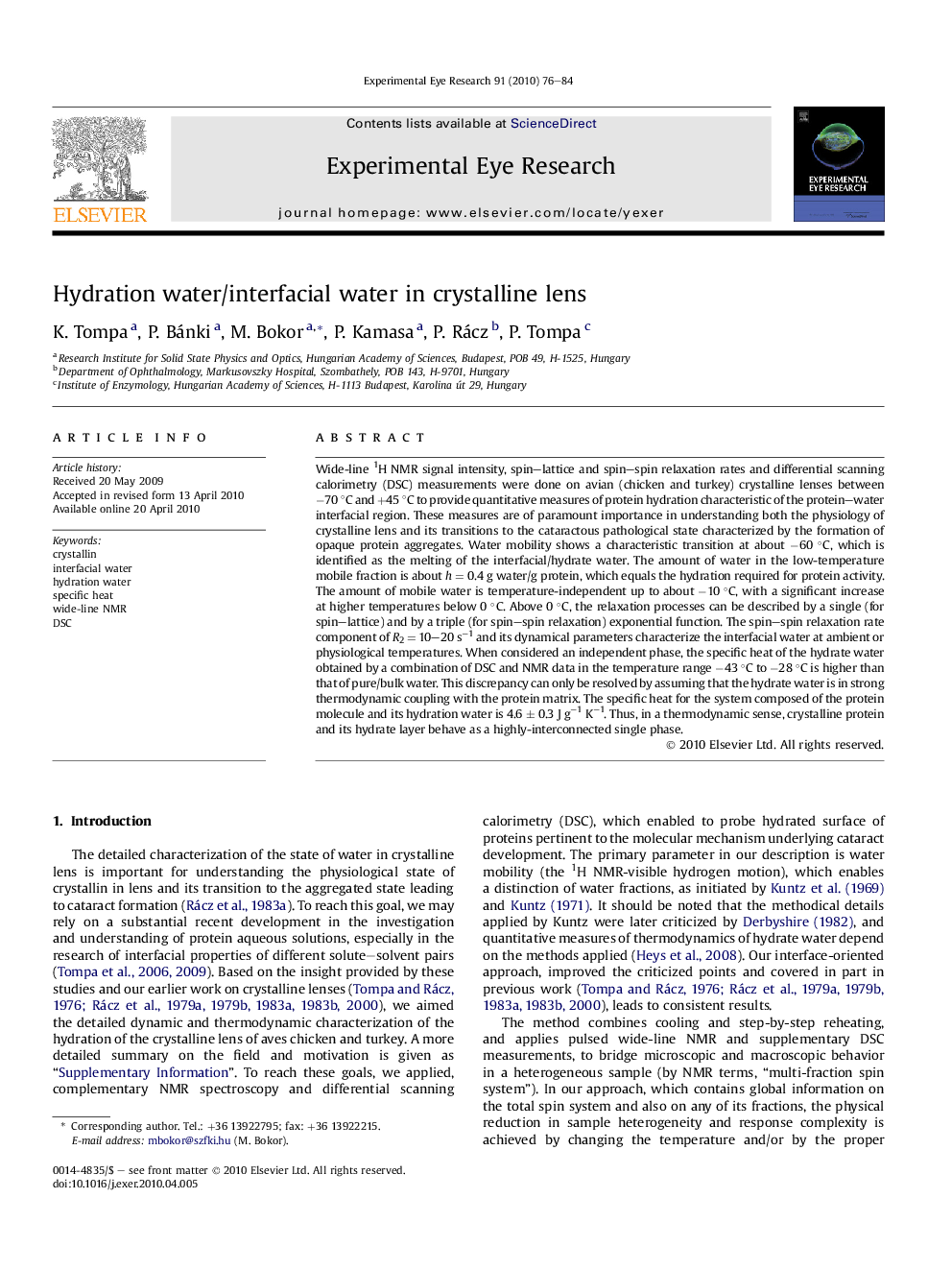| Article ID | Journal | Published Year | Pages | File Type |
|---|---|---|---|---|
| 4011805 | Experimental Eye Research | 2010 | 9 Pages |
Abstract
Wide-line 1H NMR signal intensity, spin-lattice and spin-spin relaxation rates and differential scanning calorimetry (DSC) measurements were done on avian (chicken and turkey) crystalline lenses between â70 °C and +45 °C to provide quantitative measures of protein hydration characteristic of the protein-water interfacial region. These measures are of paramount importance in understanding both the physiology of crystalline lens and its transitions to the cataractous pathological state characterized by the formation of opaque protein aggregates. Water mobility shows a characteristic transition at about â60 °C, which is identified as the melting of the interfacial/hydrate water. The amount of water in the low-temperature mobile fraction is about h = 0.4 g water/g protein, which equals the hydration required for protein activity. The amount of mobile water is temperature-independent up to about â10 °C, with a significant increase at higher temperatures below 0 °C. Above 0 °C, the relaxation processes can be described by a single (for spin-lattice) and by a triple (for spin-spin relaxation) exponential function. The spin-spin relaxation rate component of R2 = 10-20 sâ1 and its dynamical parameters characterize the interfacial water at ambient or physiological temperatures. When considered an independent phase, the specific heat of the hydrate water obtained by a combination of DSC and NMR data in the temperature range â43 °C to â28 °C is higher than that of pure/bulk water. This discrepancy can only be resolved by assuming that the hydrate water is in strong thermodynamic coupling with the protein matrix. The specific heat for the system composed of the protein molecule and its hydration water is 4.6 ± 0.3 J gâ1 Kâ1. Thus, in a thermodynamic sense, crystalline protein and its hydrate layer behave as a highly-interconnected single phase.
Related Topics
Life Sciences
Immunology and Microbiology
Immunology and Microbiology (General)
Authors
K. Tompa, P. Bánki, M. Bokor, P. Kamasa, P. Rácz, P. Tompa,
